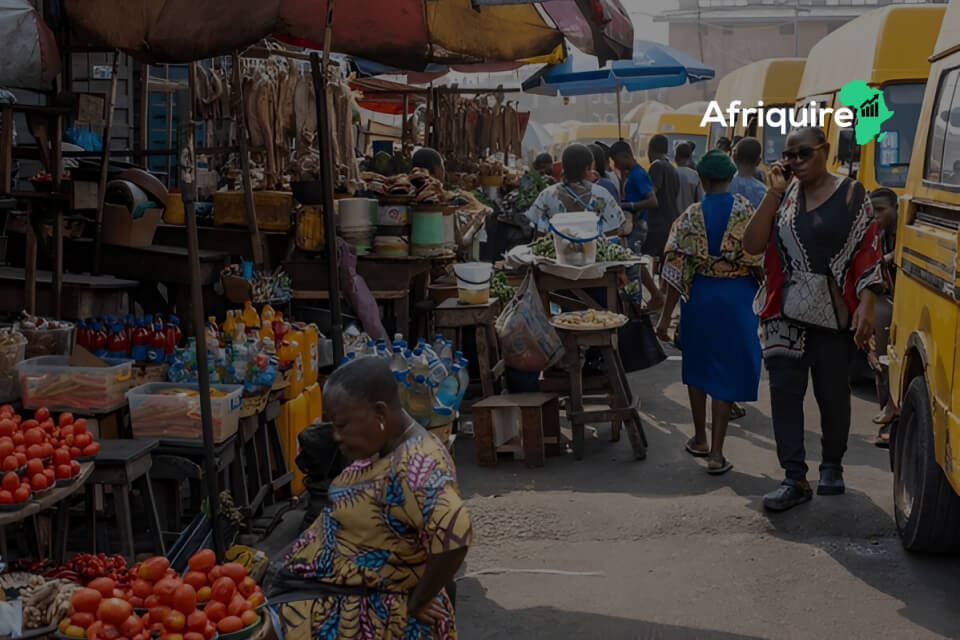Introduction
The impact of microfinance on poverty alleviation in Africa is a big topic. It plays a strong role in how the continent is growing and changing. Many families in Africa struggle with poverty. However, microfinance is helping them find a way out. It gives small loans and simple financial services to people who cannot use regular banks. This means more people can now start small businesses, take care of their families, and improve their communities.
In this article, you will learn what microfinance really means in Africa. You will also see how it connects with fighting poverty and why it matters for the future. Step by step, we will explore the role it plays and the results it brings.
Defining Microfinance in the African Context
Microfinance is the name for small financial services. These include loans, savings, insurance, and money transfers. In Africa, many people cannot get help from normal banks. This is because they do not have enough money, assets, or credit history.
Microfinance institutions give them a chance. These organisations include small banks, non-profits, co-operatives, and even some big banks. Their main goal is to help the poor. Most of the time, they focus on women, young people, and small business owners.
By giving them financial tools, they help people start or grow their businesses. This is very important for places where regular banking is hard to reach.
The Link Between Financial Access and Poverty Reduction
In many parts of Africa, people cannot get loans or save money safely. Because of this, it is hard to grow a business, pay school fees, or deal with emergencies. This is where microfinance comes in.
Microfinance gives people what they need to take the next step. Small loans help people start businesses. Savings plans help families prepare for the future. These services have helped many people, especially women in rural areas, become financially stronger.
When families earn more money, they can afford better food, health care, and education. That is how microfinance helps reduce poverty. It also plays a big role in the growth of African small businesses. At the same time, the impact of microfinance on African social enterprises keeps growing too.
Aim and Structure of the Article
This article aims to give a clear overview of the impact of microfinance on poverty alleviation in Africa. You will learn:
- How Microfinance Works: We will explain how these services help reduce poverty in real life.
- Success Stories and Case Studies: You will read real examples of people and communities who have benefited.
- Ways to Measure Impact: You’ll see how experts check if microfinance institutions are really working.
- Challenges in Achieving Poverty Reduction Goals: We will talk about the problems microfinance still faces, such as limited funding or loan defaults.
- The Future of Microfinance in Africa: We’ll explore new ideas, digital tools, and what can be done to make it better.

Overview of Microfinance and Poverty Alleviation
The impact of microfinance on poverty alleviation in Africa is proof of how small financial help can lead to big changes. Many people in Africa who cannot use traditional banks can go for the services that MFIs offer. They give families and small businesses the tools they need to grow, save, and plan for the future.
Types of Microfinance Services – Loans, Savings, Insurance
Microfinance institutions offer many services. These services help people earn money, save money, and stay safe from unexpected problems.
First, there are microloans. These are small loans that help people start or grow their business. Some use them to buy tools, goods, or even pay school fees. Many times, the loans are given in groups. This way, people help each other stay committed.
Next, there are savings accounts. Even small savings matter. Saving helps families prepare for future needs and emergencies. It also builds confidence and control over money.
Then, there is microinsurance. This protects people if something bad happens, like illness or crop failure. It helps families recover faster when things go wrong.
Lastly, some microfinance groups offer more services. These include money transfers, mobile payments, and training on how to manage money. These services are especially important for the impact of microfinance on African social enterprises, helping them grow and become more secure.
How Microfinance Institutions Operate in Africa
Microfinance groups work in both big cities and small villages. They use different methods to reach as many people as possible.
Some are community banks. These are owned by local people and focus on helping those in rural areas. Others are savings and loan companies. They collect money from people and give out loans to traders and business owners.
There are also credit unions and cooperatives. These are groups of people who support each other. Members save money together and give each other loans when needed.
Many NGOs also run microfinance programs. They often help women, youth, and people in hard-to-reach places.
Most microfinance institutions use group lending. This means borrowers work in groups and help each other repay loans. It builds trust and makes it easier for people to succeed. Thanks to technology, mobile phones and digital platforms are making it easier to offer these services in more areas.
Theoretical Framework Connecting Microfinance to Poverty Alleviation
There are several ideas that help explain how microfinance helps reduce poverty.
First, there is the modernisation theory. This says that when people get access to money, they can improve their lives. They can build better businesses and homes, and enjoy a better quality of life.
Next is social capital theory. Microfinance builds strong connections between people. Group lending encourages teamwork and trust. When people work together, everyone grows.
Then there is the capability approach. This idea says that when people have choices, they can shape their own future. Microfinance gives them those choices. They can pay for school, health care, or invest in a business.
Studies show that microfinance leads to better food, higher income, and more confident families. These results are even stronger when microfinance is combined with other types of support.
Key Players and Stakeholders in the Sector
Many people and organisations work together to make microfinance successful.
At the center are the microfinance institutions. These provide loans, savings, and insurance to millions of people.
Some commercial banks also join in. They may work with microfinance groups to reach more people or offer extra services.
Governments play an important role too. They create rules, support programs, and sometimes offer money or guarantees to help microfinance work better.
NGOs and donors from around the world also support microfinance. They give funding and training to help improve services.
There are also networks and associations. These bring together microfinance groups to share ideas and support each other.
Together, these groups are building a strong system. They are making sure that microfinance stays helpful, safe, and easy to use. This teamwork supports the impact of microfinance on African social enterprises and in African SME growth.
Success Stories and Case Studies
The impact of microfinance on poverty alleviation in Africa is strong and clear. Many people now have better lives because of small loans and simple banking services. These financial services help people who usually cannot get help from banks. Let’s explore real-life stories that show how microfinance is making a difference across Africa.
Microfinance Impact on Women Entrepreneurs
Microfinance has helped many women in Africa. Before, they had business ideas but didn’t have money to grow them. Now, with access to small loans, they can start or expand small businesses. These include tailoring, farming, selling food, and more.
For example, in countries like Nigeria and Kenya, many women have used these loans to buy tools and materials. This has helped them earn more money and care for their families. More importantly, it has given them the power to make their own financial decisions.
Clearly, this is part of the role of microfinance in not just the growth of women entrepreneurs, but also African SME growth. When women succeed in business, their communities grow stronger too.
Rural Development Through Micro-Loans
Microfinance is also changing life in rural areas. Many farmers now have money to buy seeds, fertilizer, and small machines. These tools help them grow more crops and earn better incomes.
In areas where banks do not exist, microfinance institutions give people the help they need. This not only reduces poverty but also brings jobs and food to more communities.
In countries like Uganda and Tanzania, these small loans have helped farmers build bigger farms and take care of their families. This shows how microfinance is supporting rural development and helping fight poverty in faraway places.
Case Studies from East, West, and Southern Africa
The impact of microfinance on poverty alleviation is happening all over Africa.
In East Africa, Kenya has many microfinance groups that give loans to small business owners. This support has helped many of them grow their businesses.
In West Africa, Nigeria’s microfinance banks are helping low-income families. People who never had access to credit before can now borrow money to start their own businesses.
Southern Africa also shows great results. In places like South Africa and Zambia, microfinance is helping women and young people become entrepreneurs. They are learning new skills, creating jobs, and lifting themselves out of poverty.
Clearly, microfinance is playing a key role in African SME growth, especially for youth and women.
Role of NGOs and Private Sector-Led Initiatives
Non-governmental organisations (NGOs) and private companies are making microfinance even better. NGOs often give business training, which helps people use loans wisely.
At the same time, private companies are using mobile banking and digital platforms. These tools make it easier for people in hard-to-reach areas to access money and services.
Together, they make microfinance stronger. They also support the impact of microfinance on African social enterprises, where business and social good come together. These efforts help more people escape poverty in a lasting way.

Measuring the Impact on Low-Income Communities
Microfinance gives small loans and financial help to people who don’t have access to regular banks. These loans are meant to help poor families improve their lives. But how can we tell if it really works? Experts look at different signs to see if people are truly better off after using microfinance.
Indicators Used to Assess Poverty Reduction
To understand if microfinance is helping, researchers look at how people’s lives change over time. They check things like if families are earning more money, living in better houses, or able to save a little.
They also look at whether children are going to school and whether families can visit the doctor when they are sick. If people can afford better food, school fees, and health care after getting a loan, it’s a good sign that things are improving.
Household Income Growth and Stability
One big goal of microfinance is to help families earn more money. Many people who get small loans use them to start or grow businesses. Some sell goods in the market, while others farm or make crafts to sell.
As a result, many families begin to earn a steady income. This allows them to take care of daily needs and plan for their future. However, it’s not always easy. Sometimes, businesses don’t grow quickly or face problems like bad weather or low sales. So, while income often improves, it can take time.
Improvement in Education, Health, and Housing
Microfinance doesn’t just help with money. It also helps families improve other parts of life. For example, when a family earns more, they can send their children to school. They can also pay for medicine or hospital visits when someone is sick.
Some families use their loans to fix or build better houses. Over time, these changes can help people live safer, healthier lives. They also help children grow up with better chances to succeed in the future.
Limitations and Complexities in Measurement
Even though microfinance helps many people, measuring its success is not always easy. In some places, the results take longer to show. In others, the outcomes are different from one family or village to another.
Also, not everyone benefits the same way. While some do well, others may find it hard to repay their loans or may not see big changes. Sometimes, families that are already doing a little better benefit more than those in deep poverty.
Other outside problems, like rising prices, poor roads, or unstable governments, can also affect how well microfinance works. Because of this, experts must look at many things when checking the results.
Even with these challenges, we can’t ignore the positive signs. The role of microfinance in African SME growth is becoming clearer. Many small businesses are growing, creating jobs, and helping communities. Also, the impact of microfinance on African social enterprises is showing how it can support businesses that help solve community problems.
Challenges in Achieving Poverty Reduction Goals
Microfinance has helped many people across Africa. It supports small businesses and helps families improve their income. However, even with these benefits, there are still some big challenges. These problems make it harder to see the full impact of microfinance on poverty alleviation.
Let’s look at the main issues that affect how well microfinance works. Understanding them can help us know how to make things better.
High Interest Rates and Repayment Issues
One big challenge is the high interest rates charged by many microfinance organisations. These groups often work with small amounts of money. Because of that, they need to charge higher rates to cover their own costs.
As a result, some people find it difficult to pay back the loans. When they cannot repay on time, they may fall into debt. This makes their financial problems worse, not better. It also damages their credit history, making it harder to borrow again in the future.
If microfinance is going to help more people, interest rates need to be lower and repayment plans must be easier to manage. That way, the impact of microfinance on poverty alleviation will be stronger and longer lasting.
Limited Outreach in Remote Areas
Another problem is that many microfinance services do not reach people living in rural or faraway areas. Most microfinance groups are found in big towns and cities. This is because it costs less to operate there.
Sadly, this means that people who live in small villages, especially women and farmers, are left out. These are the people who often need help the most.
To truly grow the role of microfinance in African SME growth, services must be expanded to rural areas. When more people have access, more businesses can grow, and more families can escape poverty.
Misuse of Funds and Lack of Training
Some people who receive loans use the money for things like paying school fees, buying food, or handling emergencies. While these needs are real, the loan was meant to grow a business. So, when the money is used for other things, the business may not grow.
Also, many borrowers do not have enough knowledge about how to run a business. They may not know how to budget, plan, or save money. This lack of financial training can lead to poor decisions.
For the impact of microfinance on African social enterprises to be strong, borrowers must receive good training. They need support to learn how to manage money and grow their businesses in the right way.
Sustainability of Microfinance Institutions
Microfinance groups also face their own problems. Many of them have a hard time finding money to lend. They may also have high running costs and weak management. These problems make it hard for them to keep helping people for a long time.
If these organisations are not strong, they can close down or stop lending. This means that fewer people get support, and the whole system becomes weaker.
To keep the impact of microfinance on poverty alleviation growing, these groups must become stronger. They need more funding, better management, and long-term plans to stay active and reach more people.
Future Outlook for Microfinance
The future looks even brighter. Microfinance is growing and changing fast. New tools, better ideas, and strong support from governments are helping it reach more people. Let’s take a closer look at how microfinance will keep improving lives across the continent.
Integration with Digital Financial Services
First of all, technology is making microfinance better. Today, more people use mobile money and online banking. Because of this, microfinance can reach people living in villages or faraway areas.
Now, small business owners and farmers can get loans, save money, and even buy insurance using their phones. Transactions are faster and cost less. That’s a big win.
Also, digital tools make it safer and easier for microfinance institutions to help more people. This helps many African small businesses grow.
Scaling up Inclusive Financial Models
Next, microfinance institutions are focusing on making services more inclusive. This means creating products that work well for women, young people, and people in rural areas.
Some offer group loans, which allow friends or neighbours to borrow money together. Others have flexible repayment plans that are easier to manage. And many offer financial education so people know how to handle money wisely.
To reach even more people, microfinance groups are now teaming up with banks, fintech startups, and even governments. These partnerships make services better and help microfinance grow faster. They also increase the impact of microfinance on African social enterprises, which work to solve social problems in local communities.
Policy and Regulatory Support for Growth
For microfinance to grow in the right way, it needs strong policies and good rules. Governments and regulators are stepping in to help. They are creating fair systems that make it easier to borrow money safely.
These rules protect borrowers and guide lenders. For example, in some countries, laws now cover digital lending and make sure customers are treated fairly.
With the right policies in place, more investors will trust microfinance institutions. That means more money will be available to help poor families and small businesses.
Long-Term Potential to Transform Livelihoods
In the long run, microfinance can truly change lives. When people can borrow money, they can open shops, fix their homes, or pay for school. Over time, this helps them earn more and live better.
It’s not just about money. Microfinance also builds confidence and teaches people how to manage their businesses. Families become stronger. Communities grow. Poverty slowly fades away.
So, when we talk about the impact of microfinance on poverty alleviation, we are talking about real, lasting change that goes beyond income. It’s about giving people hope and the tools to build a better life.

Frequently Asked Questions (FAQs)
1. How does microfinance help reduce poverty?
Microfinance provides small loans and financial services to poor people who cannot access traditional banks.
2. What challenges does microfinance face in reducing poverty?
Challenges include high-interest rates, limited outreach to the poorest, poor financial literacy, and sometimes lack of infrastructure.
3. How does microfinance support African small businesses?
Microfinance plays a key role in African SME growth by providing capital to start or expand businesses. This creates jobs and stimulates local economies.
4. What role does microfinance play in African social enterprises?
Microfinance helps social enterprises by funding projects that address social problems, such as healthcare or education, while also creating sustainable income sources.
5. Can microfinance alone end poverty?
No, microfinance is a useful tool but must be combined with education, healthcare, infrastructure, and good policies to effectively reduce poverty.
Conclusion
The impact of microfinance on poverty alleviation in Africa is significant but complex. Microfinance has helped many low-income people improve their lives by providing access to credit and financial services they could not get before. It supports the growth of small businesses, which in turn creates jobs and boosts local economies.
However, challenges like high costs, limited reach, and repayment difficulties mean microfinance alone cannot solve poverty. To maximise its benefits, microfinance must work alongside education, infrastructure development, and supportive policies. As microfinance evolves with new technology and better regulations, its role in African SME growth and social enterprises will likely increase, helping more communities rise out of poverty.



